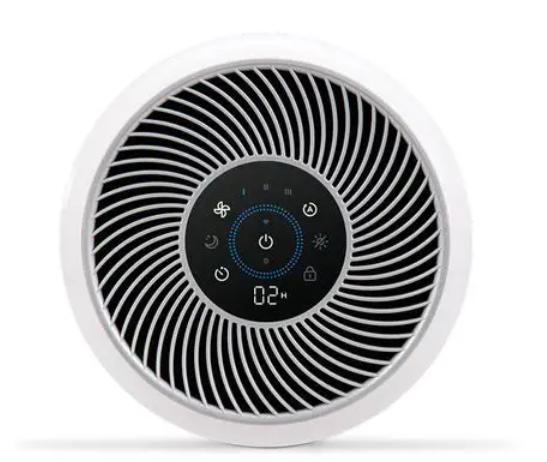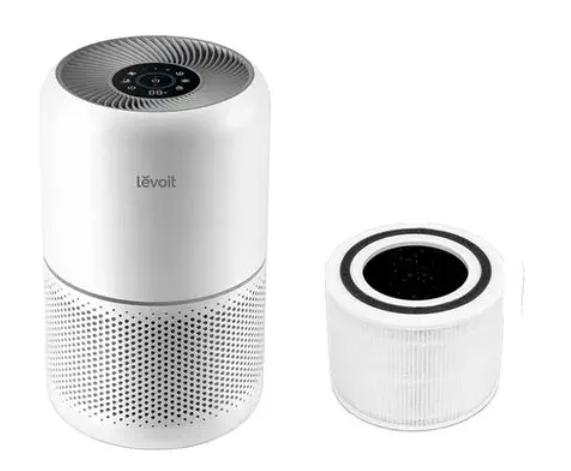The quality of the air inside your home has a significant impact on your health and well-being. Using an air purifier helps remove pollutants, allergens, and other particles, ensuring fresher, cleaner air. However, to maintain their efficiency, it’s crucial to change the filters on a regular basis. Many people wonder how often to change air purifier filter components to ensure optimal performance. This guide covers everything you need to know about when and how to replace your air purifier filter, the importance of these changes, and signs that it’s time for a replacement. Read on to keep your air purifier functioning at its best.

Why Regular Filter Replacement Is Crucial
Changing your air purifier filter regularly is essential for several reasons. First, a clean filter ensures that the purifier functions at its highest efficiency. Over time, filters accumulate dust, pollen, pet dander, and other pollutants. A clogged filter can’t effectively trap these particles, reducing the machine’s ability to clean the air.
Regular replacement also extends the life of the air purifier. When the filter is dirty, the air purifier has to work harder. This extra effort can lead to wear and tear, thus shortening the appliance’s lifespan. Moreover, a clogged filter can cause the purifier to overheat, leading to potential damage.
Health benefits are another crucial reason for timely filter replacements. Polluted air can exacerbate respiratory conditions like asthma and allergies. A fresh filter helps to trap these irritants, ensuring a healthier living environment. In a home with pets or smokers, frequent replacement is even more critical due to the higher levels of pollutants.
Finally, for those who suffer from seasonal allergies or live in areas with high pollution, regularly changing the filter ensures the purifier will effectively reduce these contaminants, providing cleaner air and an overall healthier living space.
How Often Should You Change Your Air Purifier Filter?
Manufacturer Recommendations
Manufacturers usually provide guidelines on how often you should change your air purifier filter. Generally, these suggestions range from every three months to once a year, depending on the type and model of the purifier. HEPA filters, for instance, typically need replacing every 6-12 months. Consult your air purifier’s user manual for specific details. Following these guidelines helps maintain optimal performance and keeps your warranty valid.
Environmental Factors Affecting Filter Lifespan
Environmental factors play a significant role in determining how often you should change your filter. In homes with high pollution levels, including those near busy roads or industrial areas, filters may become clogged faster. The same applies to households with pets, smokers, or high levels of indoor dust and mold. These elements add to the volume of particulates the filter has to trap, hastening the need for replacement.
Usage Patterns and Their Impact
How often you use your air purifier also affects the lifespan of the filter. Running your purifier continuously 24/7 leads to a more frequent replacement cycle than intermittent use. For those who operate it only during specific times, such as overnight or seasonally during allergy-prone periods, the filter may last longer. Keep usage levels in mind when considering replacement schedules.
Recognizing the Signs That Your Filter Needs Replacement
Recognizing the signs of a clogged air purifier filter is crucial for maintaining air quality. One common indicator is reduced airflow. If you notice that the output has lessened, the filter is likely obstructed by pollutants. Additionally, if your air purifier seems noisier or starts producing unusual sounds, it may be struggling to pull air through a dirty filter.
Another sign is a persistent increase in allergy or asthma symptoms. This could mean the filter isn’t trapping allergens effectively. An uptick in dust on surfaces around the house can also signal that the air purifier isn’t doing its job efficiently. Finally, a visual inspection of the filter can provide clarity. If it looks dark or discolored, it’s time for a change.
Step-by-Step Guide to Replacing Your Air Purifier Filter
Preparation and Safety Measures
Before replacing your filter, ensure that the air purifier is turned off and unplugged. Refer to the user manual for any specific safety precautions. Gather the necessary tools and the replacement filter to streamline the process.
Removing the Old Filter
Open the filter compartment, which is typically accessible from the back or bottom of the unit. Carefully slide out the old filter, taking care not to release accumulated dust and debris into the air. Place it in a plastic bag for proper disposal.
Installing the New Filter
Insert the new filter into the compartment, making sure it aligns correctly with the placement guides. Some models may have filters that only fit in one direction, so ensure it’s positioned correctly for optimal performance.
Post-Replacement Checklist
After securing the new filter, close the compartment securely. Plug the air purifier back in and reset any filter change indicators. Run the purifier briefly to check for proper operation.

Conclusion
Regularly changing your air purifier filter is vital for maintaining clean, healthy indoor air. Understanding how often to change air purifier filter depends on the manufacturer’s recommendations, your indoor environment, and usage. By following these guidelines, adjusting for environmental factors, and recognizing signs of a dirty filter, you keep your air purifier running efficiently. Proper care not only extends the life of the purifier but also ensures you and your family breathe cleaner air.
FAQ
How do I know if my air purifier filter is dirty?
You can tell if your filter is dirty by checking for reduced airflow from the purifier, unusual noises, increased dust in your home, and worsening allergy symptoms. A visual inspection revealing a dark or clogged filter is also a clear indicator.
Can I clean and reuse my air purifier filter?
Some filters are washable and reusable, but many, especially HEPA filters, are not designed to be washed. Always refer to your air purifier’s user manual for specific instructions regarding filter maintenance.
What happens if I don’t change my air purifier filter regularly?
Failing to change the filter can lead to decreased air purifier efficiency, increased energy consumption, and potential damage to the unit. More importantly, it can negatively affect indoor air quality, exacerbating health issues related to air pollution.